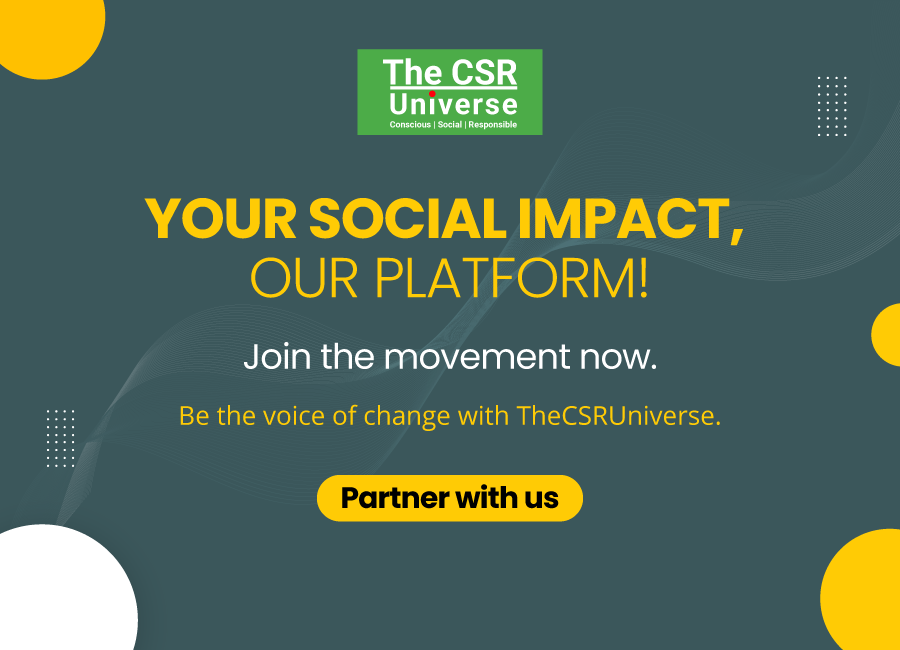Sustainability has moved from the periphery of corporate agendas to the centre of strategic decision-making. In India, this shift is reflected not only in evolving regulations and disclosure norms, but also in how companies are redesigning operations, strengthening supply chains, and redefining stakeholder priorities. The question for many is no longer whether to act on ESG, but how to do it in a way that creates lasting value for both business and society.
In this conversation with Dr. Mahesh Dalvi, Director – Operations Consulting (ESG & Sustainability Services) at RSM India, we explore the frontlines of this transformation. With over two decades of experience and a doctorate in Sustainability/ESG from IIM Mumbai, Dr. Dalvi has closely observed the shift from compliance to commitment. From unpacking how Indian companies can leverage BRSR beyond compliance, to identifying sectoral gaps in ESG maturity, to charting a realistic path towards India’s 2070 Net Zero ambition, his insights are rooted in both rigour and pragmatism.
For TheCSRUniverse’s readers — policy shapers, corporate leaders, and sustainability practitioners — this interview offers more than a snapshot of trends. It is a blueprint for embedding ESG thinking into the very DNA of an organisation, ensuring that sustainability is not an afterthought but the driver of long-term business resilience.
Continue reading.
Q&A
Q. From your vantage point in ESG consulting, how have Indian companies evolved in their understanding and adoption of sustainability beyond compliance, especially in integrating ESG into their core business models?
A. At RSM India, our approach to Environment, Social & Governance (ESG) begins with Compliance, Performance, and integration of ESG into the very essence of the business, showcasing the evolving nature of ESG. Over the last two decades, RSM India has witnessed a significant transformation among Indian companies, shifting from basic compliance reporting to the adoption of sustainability, especially in embedding ESG within their core business strategies.
According to the Global Reporting Initiative (GRI) database, the number of Indian companies releasing their ESG Sustainability reports grew from 10 in 2009 to 100 by 2020. India has made significant strides through initiatives such as the National Voluntary Guidelines (NVG), the CSR Act of 2013, the Companies Act of 2013, Business Responsibility Reporting (BRR), Business Responsibility and Sustainability Reporting (BRSR), and BRSR Core, with notable progress seen after 2021. About 250 listed entities published their BRSR reports in 2021, a number that increased to 500 in 2022 and exceeded 1,000 by 2024. Following 2025, BRSR Core is set to ensure external assurance and promote the integration of ESG issues throughout the value chain. The evaluation process of the Dow Jones Sustainability Indices (DJSI) recognizes how leading global companies incorporate ESG into their business models, and since 2022, more than 20 out of 500 companies have been featured annually in the DJSI Sustainability Yearbook.
Based on our content-focused BRSR analysis of the top 1000 companies at RSM India, more than 90% of companies in India performed a materiality assessment that encompasses both risks and opportunities associated with those issues. Around 80% of the top 250 companies have conducted assessments of their supply chains for health and safety and working conditions. More than 120 companies have set net-zero targets, and 11 companies have pledged to RE100, a global renewable energy initiative, marking a significant voluntary effort that could represent the largest contribution from any developing nation. In the top 1000 companies, Diversity, Equity, and Inclusion (DEI) indicates that women represent about 18% of the entire workforce of 1.3 crore.
Among the top 250 companies, all of them report on Corporate Social Responsibility (CSR), and around 190 companies have mentioned social impacts by spending more than 2% of their net profits. Organisations are increasingly seeking expertise in ESG maturity assessments (benchmarking against international standards), Materiality analysis and gap evaluations, Life Cycle Assessments (LCA), Net Zero action plans, Policy development, and ESG incorporation into business operations. Companies that incorporate ESG into their business strategies are not just following regulations; they are actively preparing their operations for the future, fostering trust among stakeholders, and opening new avenues for value creation.
Q. Many organizations view BRSR as a reporting mandate. What are some transformative ways companies can use the BRSR framework to identify and act on their material sustainability issues, rather than treat it as a box-ticking exercise?
A. While SEBI’s mandate has elevated the BRSR as a regulatory obligation, it should be perceived not as a mere compliance exercise but as a strategic diagnostic framework. Year on year, a large number of investors are going to make decisions based on ESG Ratings, and Rating bodies are going to consider ESG disclosures for evaluating performance. ESG disclosures content & quality are going to play a vital role in the company’s performance.
At RSM India, we assess a company’s current ESG performance and with proper benchmarking and surveys, enable companies to identify proper material sustainability issues. In the top 1000 companies, due to the BRSR mandate, more than 90% of the companies have published their material issues in Section A-26; however, many have not considered climate change as the biggest risk and missed the opportunity to disclose their strategic plan to mitigate climate change impacts. For example, in the Automotive industry, where stricter regulations and increased consumer awareness are pushing a move towards low-emission and alternative fuel vehicles, in addition to circular economy efforts like recycling.
Major global car manufacturers are actively disclosing their strategies for this transition. Materiality assessments have become one of the most in-demand ESG advisory services in the Indian market in the last 3–4years.
As per analysis conducted by RSM India on the top 1000 companies, almost 91% Indian companies are reporting material issues, including risks & opportunities associated with those issues, and in FY2024, around 9% companies did not report any material issues in their BRSR report’s section A. This highlights a significant shortfall not in regulation, but in preparedness and internal capacity.
Section B outlines indicators related to the targets and performance of companies. 184 of the top 250 Indian companies have established sustainability commitments & strategies that include targets for their relevant material topics, and they reveal their comprehensive ESG strategies to assist India’s transition to net-zero emissions and uphold other global commitments of the country.
Section C of the BRSR focuses on performance disclosures based on principles and includes various indicators (Essential/Leadership), such as Life Cycle Assessment (LCA), among 1000 companies, more than 150 have performed LCA. Employee inclusion, business transparency, accounts payable, research and development expenses, and corporate social responsibility (CSR) spending are also highlighted. Among the top 250 companies, all are reporting on CSR, and around 150 companies have exceeded the threshold of spending 2% of their net profit. Additionally, close to 150 out of the top 250 have reported engaging in R&D for sustainable products and processes, areas that are rarely covered in well-recognized global frameworks. By conducting evaluations of internal capabilities, organizations can better align their ESG objectives and develop a targeted roadmap.
Q. India has made a bold commitment to achieve Net Zero by 2070. According to RSM India, what should be the top three strategic priorities for Indian mid-sized and large companies to realistically contribute to this national goal?
A. More than 140 nations, including India, have pledged to achieve Net Zero by 2070, and India is progressing towards this goal via the Panchamrit framework. India contributes roughly 8% of the world's greenhouse gas (GHG) emissions, with nearly 40% of those emissions stemming from the business activity of its top 1000 listed companies; therefore, the decarbonization of these companies is crucial for India’s Net Zero goal. Based on emission data and potential opportunities, RSM India suggests three strategic priorities for medium and large enterprises.
• Transitioning to electrification and incorporating renewable energy into their operations. Electrification refers to utilizing electricity instead of directly using fossil fuels in various processes, especially when that electricity is sourced from renewable energy. This will lead to a decrease in scope 1 and 2 emissions.
• Implementing sustainable materials and circular economy practices to minimize environmental impacts throughout the product lifecycle and ensure sustainable supply chains. This will significantly lower most scope 3 emissions.
• Promoting and facilitating access to sustainable and green finance for significant investment projects aimed at carbon reduction, such as Carbon Capture and Storage Units (CCUS). This will make it financially viable to reduce scope 1, 2, & 3 emissions for industries.
Based on our assignments and insights from diverse sectors, companies are integrating sustainable materials and circular economy strategies to minimize environmental effects throughout product lifecycles and enhance sustainable supply chains. More than 120 prominent companies in India have set targets for net-zero emissions and have undergone third-party assurance. This indicates an alignment between objectives and actions, increasing our confidence that India is making significant progress towards meeting its net-zero goals.
Q. How does RSM India convince stakeholders, especially in traditionally profit-driven sectors, that ESG investments yield measurable returns, both in the short and long term? Could you share a specific example from your consulting experience?
A. RSM India believes in co-creation rather than convincing the stakeholders, and most of our stakeholders have already recognized climate change as a significant risk. Following China and the United States, India ranks as the third-largest contributor to global greenhouse gas emissions, and these three countries are collectively responsible for nearly half of such GHG emissions worldwide. Consequently, traditional profit-focused sectors in India have no choice but to view climate change risk as the most significant threat and ESG investment as a valuable opportunity.
As a leader in internal audit, RSM supports its stakeholders by integrating ESG into the internal audit process. This ensures that ESG principles are incorporated throughout all functions. This also allows our clients to focus on high-impact areas and take action on easily achievable opportunities to conserve and minimize the use of natural resources such as water and energy, as well as reduce waste. Our recommendations not only help in lowering emissions but also result in significant financial savings. Our decarbonization and net-zero strategy initiatives help in recognizing long-term opportunities and transitioning to solutions like electrification and renewable energy, accompanied by a cost-effectiveness analysis. Many of our other consulting projects are influenced by investor demand or ESG rating performance, where ESG investments are seen as creating better opportunities with cost savings.
In a particular instance, a chemicals company we worked with, managed to reduce energy costs by around 18%, amounting to 2 crores, within a year of implementing our energy transition recommendations that align with ESG principles. This effort also improved their ESG rating and BRSR scores, resulting in favourable evaluations from analysts.
In another case, we have conducted Life Cycle Assessments for clients where our recommendations & insights, when implemented, led to direct cost and energy savings.
In addition, one major benefit of planning out an ESG strategy is ensuring no disruption takes place in day-to-day operations. Health and safety are one such aspect wherein non-implementation of activities and procedures and non-investment leads to major disasters that could have been mitigated in the first place. We are also continually engaging with our clients to establish a sustainable supply chain by conducting supplier risk assessments and evaluating their ESG performance.
Our advisory approach highlights that ESG is not a compromise on profitability, but rather a strategic perspective that uncovers hidden inefficiencies and bolsters resilience by pinpointing critical areas.
Q. You’ve worked across industries. Which sectors in India do you believe are lagging in ESG maturity, and what are the most critical levers that could help accelerate their transition?
A. The World Economic Forum recognizes the most sustainable companies based on their ESG Maturity every year, and the evaluation is carried out across various industries to publish the G100 “Global Most Sustainable”. Over the past two decades, every fifth company of these G100 has been from the Banking and Financial industry, primarily due to their reduced environmental impact and superior social and governance scores.
ESG maturity in India seems more investor and customer-centric than sector-specific. SMEs with ESG-conscious clients might show better compliance than listed firms, where investor expectations remain low. This scope of maturity improvement is especially visible in sectors like Media & Communications and Real Estate.
As per our analysis of BRSR data of the top 1000 companies, in sectors like Construction & Real Estate, Mining, Metals, Logistics and Transport, Media & Entertainment, and MSMEs, the ESG maturity is still a progressive subject. Key challenges consist of a lack of internal expertise in ESG, fragmented supply chains, and inadequate digital data systems, all leading to the underreporting of BRSR indicators in these sectors, such as injuries and fatalities, as well as Scope 3 emissions.
For these companies, a beneficial initial step is to accurately report on their current practices. This approach helps to clarify their understanding of ESG and establishes a framework for setting long-term objectives, even if they are more modest in comparison to their more advanced ESG counterparts.
To accelerate their transition, we believe in the following three areas:
1. Training initiatives led by industry organizations and associations.
2. ESG starter packages for small and medium-sized enterprises (SMEs) and supply chain partners that include some form of recognition.
3. ESG maturity models with different tiers, enabling companies to develop incrementally.
For example, in our ESG initiative for a real estate company, we concentrated on fundamental yet impactful actions like implementing ISO 14001/45001, tracking waste, and sourcing sustainable materials as a stepping stone to more sophisticated sustainability performance indicators.
Q. How crucial is C-suite commitment to the success of ESG programs? What practical steps can sustainability officers take to embed ESG thinking at all organizational levels, especially in companies just starting their sustainability journey?
A. We have accessed and analysed the data of the past 20 years of G100 World’s Most Sustainable Companies and found that C-suite commitment plays a vital role in any company’s ESG program. Sustainability Vision, Strategy, and Roadmap are the key drivers of a corporate ESG program as they help in aligning corporate goals with global sustainability standards.
In India, the SEBI has well-articulated the contents of the BRSR, encompassing all key elements, particularly in section B that discloses sustainability-related policies, commitments, and statements owned, reviewed & reported by C-suite representatives. Based on our analysis of the top 250 companies, more than 80 companies have C-Suite executives or directors with their performance and compensation linked to ESG performance and targets. In the top 250 companies, more than 180 committees are led by directors, around 50 committees are led by C-Suite executives, and around 5 committees are led by senior management.
Sustainability officers need to recognize that the perspective on ESG varies across different functions within an organization, prompting them to begin by charting the existing ESG performance-related actions and the levels of influence/engagement associated with each role in the organization. To foster ESG awareness, a tailored awareness program can lay the groundwork with a structured step-by-step method:
1. Conduct a baseline study followed by a materiality assessment using the Sustainability Accounting Standards Board (SASB) framework, engaging both internal and external stakeholders to foster a sense of shared ownership.
2. Create ESG engagement modules tailored to different functions and role levels (including executives and directors) to enhance ESG performance, key performance indicators, and align them with organizational performance metrics to fulfil the sustainability vision.
3. Define a short-term and long-term ESG roadmap, integrating ESG considerations into corporate risk registers, internal audits, reporting cycles, and budget processes as a standard annual practice.
At RSM India, we are at the forefront of financial internal audits and have a vision of embedding ESG into core business operations, which we have now incorporated into our internal audit procedures. This allows us to facilitate ESG awareness workshops for board members and senior management, helping them align their strategic goals with sustainability outcomes. Through our Internal Audit program, we engage directly with the company’s top management, ensuring that our findings, insights, and suggestions are addressed for both immediate and future implementation. We have collaborated with organizations across various industries, including healthcare, steel, and chemicals, tailoring our recommendations to meet the specific needs of each sector.
We are currently working with clients to quantify the avoided emissions resulting from India’s largest electric vehicle investment. Also, developing a comprehensive ESG roadmap that includes setting baselines, defining measurable targets, and aligning strategies to achieve Net Zero.
In the journey toward ESG integration and achieving net-zero goals, strong management commitment, the formation of an internal cross-functional ESG task force, and top management approval, along with adequate budget allocation, are essential to ensure smooth and effective implementation across all levels of the organization.
Q. With increasing scrutiny on greenwashing, how can companies ensure transparency and credibility in their ESG disclosures? What role do independent audits and third-party verifications play in this process?
A. Although greenwashing remains a significant issue, cases of such misleading reports are gradually decreasing among companies. Stricter controls have been implemented on the reporting practices of companies and the independence of verifying authorities. Obtaining independent assurance of ESG reports and conducting audits of operational systems by third parties is considered a best practice, applicable to businesses of all sizes and sectors.
The introduction of BRSR Core Assurance / Assessment is set to be a game-changer in the Indian ESG landscape. It mandates a phased approach to third-party assurance of Core ESG Indicators for the top listed companies, the top 150 companies in FY 2023–24, followed by the top 250 in FY 2024–25, top 500 in FY 2025–26, and extending to the top 1,000 companies by FY 2026–27. This progressive implementation underscores SEBI’s vision to enhance the credibility, reliability, and comparability of ESG disclosures across India.
BRSR Core assurance reports primarily emphasize quantitative or metric-based disclosures, based on the premise that these metrics will ultimately and directly represent a company's sustainable growth trajectory and provide a better indication of its ESG performance. As part of the BRSR Core assurance mandate for the top 250 companies in FY 2024–25, more than 160 companies have already undertaken assurance; out of which around 150 companies have opted for reasonable assurance, while nearly 10 have chosen limited assurance.
Similarly, companies are also engaging in third-party ESG due diligence and risk assessments for their critical operational sites and services. The due diligence process is becoming an expectation from investors, who are looking for companies to back up their ESG maturity with documented evidence.
These tools are essential for fostering trust within the wider socioeconomic framework. In today's highly scrutinized investment climate, any shortcomings in our evaluations can have a direct impact on the financial status of the audited entity. At RSM India, we have ensured that the independence of our evaluations remains immaculate and at the highest standard while conducting ESG audits and assurances.
Q. SMEs form the backbone of India’s economy but often lack the capacity for full-scale ESG integration. What are some practical, scalable steps SMEs can take to begin their sustainability journey without being overwhelmed by cost or complexity?
A. BRSR Core for the top-listed 1000 companies is a revision of BRSR, expanding ESG initiatives to the value chain partners, which are mostly small and medium-sized enterprises SMEs. In May 2021, SEBI, through a notification, prescribed the format of the BRSR report.
There are mandatory and optional sections in the BRSR report, with 2 versions available to be used for SME and established entities: BRSR Lite and BRSR Comprehensive. BRSR Lite has emerged as a simplified version of BRSR, which offers a more streamlined reporting process, tailored for SMEs, ensuring they can also contribute to sustainability efforts and gain a competitive edge.
BRSR Lite provides a practical initial step, allowing them to fulfil fundamental compliance necessities and address the expectations of their business clients, particularly concerning sustainable supply chains. In addition, SMEs can begin by concentrating on metrics they are already acquainted with, such as energy usage, water consumption, workplace safety, and compliance with POSH regulations. These can be tackled through widely accepted operational enhancements, like electrification, implementing energy-efficient upgrades, and establishing zero liquid discharge (ZLD) systems.
The Government of India is also providing support through the ZED and Lean Certification Scheme (Zero Effect Zero Defect) and the Cluster Development Programme (MSE-CDP), enabling MSMEs to advance towards scaling up their operations while pursuing a sustainable growth path.
Furthermore, companies are creating comprehensive sustainable supply chain programs for their MSME partners, offering extra support through capacity building and technological assistance. Some companies are co-creating by forming region-wise clusters of SMEs, and association bodies like CII are supporting such initiatives.
Q. What is RSM India’s advice to companies looking to move from ‘reporting for compliance’ to ‘reporting for impact’? How can they ensure that their sustainability narratives are not just strong on paper, but also backed by measurable on-ground results?
A. At RSM, our ESG approach to Environment, Social & Governance (ESG) comprises three stages: 1. Compliance, 2. Performance 3. Integration.
We believe that both financial and non-financial sustainability are interconnected, and companies should maintain focus on all aspects for long-term success. ESG integration in the internal audit is enabling us to set this narrative with our clients.
Companies must identify their sustainability material issues according to global benchmarks and SASB guidelines, addressing climate change as the biggest risk. Top management must ensure good governance across their operations and value chain with the help of a policy-driven approach. Recognizing what is essential for their operations is crucial, as excessive spending to reach ESG maturity can weaken impact and create pressure on capital and resources. When implementing high-capex projects, whether in renewable energy, employee retention and leadership training, or sustainable supply chains, one important metric to assess is Return on Investment.
We were working with a leading automotive company to implement ESG frameworks, along with strengthening their safety policies, procedures, and KPIs across operations. At the beginning of our engagement, their Safety score was at 55%.
The organization obtained a 100% safety compliance score after engagement, by adopting a structured approach and site visit that focused on policy enhancement, KPI development, training needs identification, and alignment with ESG evaluation criteria.
With growing pressure on future resources, whether natural or human, an organization’s ultimate goal should be sustainable growth that ensures business continuity. Therefore, developing a sustainability strategy focused on issues significant to the company should be the initial step, with an emphasis on practicability.
Strong sustainability narratives stem from a well-crafted sustainability strategy, not the reverse. A sustainability strategy, backed by third-party validation and a commitment to ongoing improvement, should serve as a solid foundation for any organization.
The role of a good consultant is crucial here, and RSM India is committed to co-create with companies that are ready to take action on the ground and assure a sustainable tomorrow for “Our Common Future”.















.jpg)




